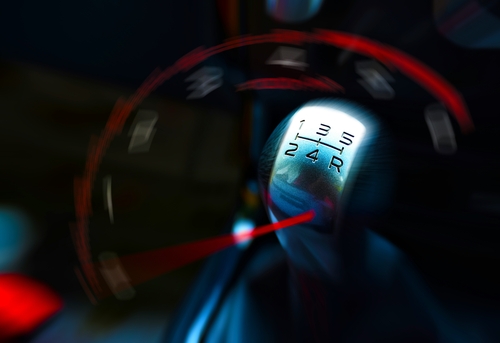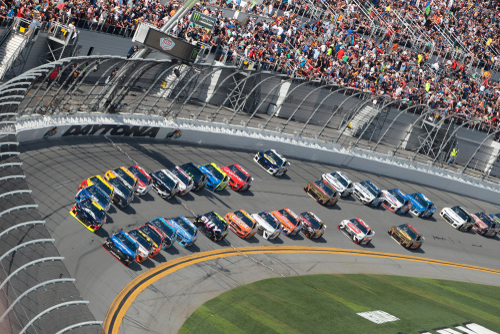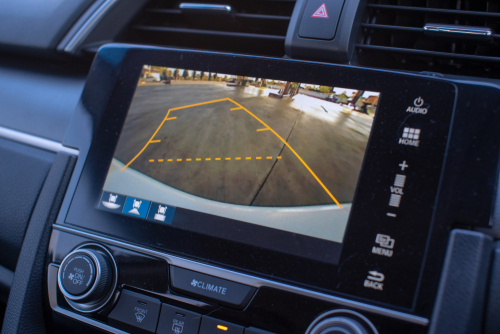So Can Race Cars Go In Reverse?

Race cars are known for their blinding speed, incredible acceleration, and superb handling. But, have you ever seen race cars go in reverse, especially on the race track?
All race cars are required to have at least one reverse gear, on top of their multiple semi-automatic sequential speeds. Mechanically, all race cars can go in reverse, but there are plenty of reasons why it’s rare to see them do this maneuver. Moving backward is simply the opposite of what it will take to win the race, which is to move forward.
Additionally, going in reverse in a high-speed track is a recipe for disaster. When a race car moves backward on a race track, it blocks off one of the lanes and becomes a collision hazard. For this reason, the few instances that race cars use their reverse gears are outside the track or if the vehicle overshoots their approach to the pit stop.
Cars usually have front suspensions that are designed to go forward and not backward. This layout, plus the fact that you typically drive looking straight ahead, make it harder to drive in reverse at a fast speed.

How fast can a race car go in reverse?
It’s hard to tell the maximum speed of which a race car can go in reverse. In the history of F1 racing, for example, there are only a handful of instances when a driver has to drive backward. Nigel Mansell did it with his Ferrari in the 1980s, and so did Nico Roseberg at Circuit Gilles Villeneuve in 2008.
Even car manufacturers are private about the top speed of their vehicles if ever they drive in reverse. The fact is that very few people want to know how fast they will drive backward, unless they are stunt drivers or just someone curious.
We scoured the Internet and found out people have also tried to experiment with driving in reverse. Michael Vaim of Auto Vlog, a popular Youtube channel about cars, drove backward on an empty strip of road.
Michael was driving a 2017 Ford Fusion with a 2.0-Litre 4-cylinder engine that produces 240 horsepower. At the end of his reverse driving session, the fastest he could do was 40 miles per hour (mph).
While the 2017 Ford Fusion is nowhere near an actual race car, it’s a good gauge for a car’s fastest speed in reverse. The Ford Fusion’s top speed is 152 mph. Crunching the numbers from Mr. Vaim’s experiment, his car can only go backward by 26-percent of his car’s high speed.
RELATED: Are all Nascar race cars the same?

Calculating the Top Speed of a Car in Reverse
If you want to find out the theoretical speed limit of any race car going backward, there is a simple formula you can use:

If you break down this formula, you can see that three things can influence the speed of a car when it’s moving, either forward or backward. They are:
- The engine’s speed and revolution limit
- The gear ratio of the whole system
- The circumference of the car’s wheels
The Bugatti Chiron Super Sport 300+ is one of the fastest modified vehicles today with a top speed of more than 300 mph. When Andy Wallace drove it in the Volkswagen-owned Ehra-Lessien test track in Saxony Germany, it reached a record speed of 304.77 mph.
Under the hood, the Chiron is powered by an 8.0-Liter turbocharged W16 engine. Its powertrain provides 1,479 horsepower at 6,700 revolutions per minute (RPM) and has 1,600 Nm of torque.
According to Bugatti’s data, the Chiron has a gear ratio of 3.58 for its reverse gear. The record-breaking Chiron was equipped with MICHELIN Pilot Sport Cup 2 tires. The front tires were 20-inches in diameter, while the rear tires are 21-inches big.

The Fastest Car When Going in Reverse
Before you plug in these numbers for the Bugatti Chiron, it’s essential first to determine the gear ratio of the whole system first. You can get this figure by multiplying the gear ratio of the reverse gear and the final drive ratio.
Next, convert RPM to RPH by multiplying the first figure by 60. Then, convert 21 inches to miles by multiplying it by 0.0000157828. Finally, multiply the tire’s diameter by 3.1416 (or pi) to get the circumference, then you’re good to go.
Using the formula above, we get this equation:
Speed of reverse gear= 6,700 RPM x 60 minutes / 3.58 21 x 0.0000157828 miles x 3.1416
Crunching the numbers, we finally got 116.89 mph!

Can a race car win in reverse?
When we take into consideration everything we learned at this point, it’s quite clear—it’s possible for a race car in reverse to win, but not in an official race. If it’s in a drag race, then that can be quite a close match depending on which cars are paired to go against one another.
If there is anywhere that cars driving in reverse have a higher chance of winning against a forward-moving rival—it would be in the movies.
Remember the 2 Fast 2 Furious scene where Paul Walker’s character drives in reverse on a freeway? If Bryan O’Conner were lapping other cars, that would put his reverse speed at a whopping 70 mph!
During the Fast 8- Fate of the Furious, Vin Diesel’s character topped that when he drove backward for a ridiculous 100 mph! However, Dominic Torreto has a modified turbocharged engine and a rig that borders into fantasy.
Although, some car experts did hypothesize that reaching 100 mph using Dominic’s trick is feasible, but only for a few meters. It will also result in the engine exploding, as depicted by the movie. However, because no one is crazy enough to test it in real life, it’s hard to say if such speeds can be reached while going in reverse.
Even if, for argument’s sake, someone was able to pull it off—there is no racing discipline where it can dominate. For example, drag races in the US require participants to race in a 400-meter straight course. Meanwhile, drag races in South America typically happen in 200-meter courses.
RELATED: Do Racing Cars Have Power Steering?

Conclusion
Race cars, whatever the discipline they are in, can certainly go in reverse. However, because of the gear ratios, most race cars can only reverse between 30 mph and 40 mph. With those speeds, it’s hard to see a vehicle going backward, beating a car that’s even on its first gear.
Related Questions
Driving in reverse at full speed is quite dangerous, especially if you do it on a racetrack full of other vehicles. There’s also a good chance that you are going to damage your car’s gears if you drive backward at 50 mph or more.
What’s the world record speed for a car going in reverse?
The all-electric Audi S3 driven by Daniel Abt holds the “unofficial” world record for the fastest car in reverse. Instead of a fuel engine, the Audi S3 used four Formula E electric motors. The modified vehicle exudes a staggering 1,200 horsepower, which allowed it to reach 130 mph.
Has anyone raced while driving backward?
In 2012, stunt driver Terry Green was able to cover a 1.16-mile-long road with hill climbs at just 1 minute and 37 seconds. That figure would put his average speed at 55 mph. To achieve such a feat, Green’s team has to install direct-drive electric motors that have “zero” gears.